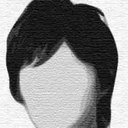Causes of radiculopathy in young athletes with spondylolysis.
Từ khóa
trừu tượng
BACKGROUND
The main clinical symptom of lumbar spondylolysis is lower back pain. Radiculopathy rarely occurs without vertebral slippage. Hypothesis Spondylolysis in young athletes can cause lumbar radiculopathy.
METHODS
Case series; Level of evidence, 4.
METHODS
Ten patients (7 males and 3 females) were included in this study. The age of the patients ranged from 12 to 27 years. We employed plain radiography, computed tomography, magnetic resonance imaging, and selective radiculography if needed.
RESULTS
The pathomechanism was classified into nonspondylolytic radiculopathy (3 cases) and spondylolytic radiculopathy (7 cases). In the nonspondylolytic group, 1 patient had a juxta-facet cyst at L4-5 and 2 patients had a herniated nucleus pulposus. In the other group, spondylolytic-related factors caused radiculopathy, and spondylolysis was in the early or progressive stage in all 7 patients. Radiologic findings indicated that radiculopathy was caused by extraosseous hematoma or edema in the vicinity of the fracture site. The radiculopathy disappeared within a month of nonoperative management, and radiologic abnormalities disappeared 3 to 6 months later.
CONCLUSIONS
Radiculopathy can occur together with lumbar spondylolysis without slippage in young athletes. We propose extra-osseous hematoma or edema at the site of spondylolysis as the unique pathomechanism causing radiculopathy in young athletes. Radiculopathy is rare in athletes with spondylolysis. Magnetic resonance imaging is a useful tool to clarify the pathologic changes that induce the radiculopathy for both spondylolytic and nonspondylolytic factors.


